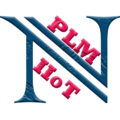
Digital engineering innovations come to be an emerging area in manufacturing industry. Nowadays, industries are utilizing Virtual Reality and Augmented Reality in various stages of their manufacturing procedure. Scope and interpretation of PLM are broadening and also growing to meet the demands of an increasingly intricate network of commercial partners spread around the world and also bound with each other by common service objectives. Augmented Reality and Virtual Reality are one of the technological innovation of Industry 4.0.
PLM is a collaborative foundation enabling individuals throughout prolonged business to collaborate much more efficiently. In the era of Industry 4.0 vision of the digital factory shows that the assimilation of PLM system with VR/AR facilities can provide great deal of advantages for the enhancement of work performances in the operations.
Virtual reality (VR) is a computer technology that uses virtual reality headsets or multi-projected environments, sometimes in combination with physical environments or props, to generate realistic images, sounds and other sensations that simulate a user’s physical presence in a virtual or imaginary environment. A person using virtual reality equipment is able to “look around” the artificial world, and with high quality VR move around in it and interact with virtual features or items.(Source: Wikipedia)
Augmented reality (AR) is a live direct or indirect view of a physical, real-world environment whose elements are “augmented” by computer-generated or extracted real-world sensory input such as sound, video, graphics, haptics or GPS data.With the help of advanced AR technology (e.g. adding computer vision and object recognition) the information about the surrounding real world of the user becomes interactive and digitally manipulable. Information about the environment and its objects is overlaid on the real world.(Source: Wikipedia)
How Augmented Reality and Virtual Reality can be used in Manufacturing Sectors?
I have complied some Use Case where AR/VR can be applicable as
1.Operator and maintenance technician can be trained in a Virtual environment learning all about a new piece of equipment before it is installed, train on “What-if Scenarios”, by the use of VR.
2. Virtual Factory Teaching – Bring virtually the total business process from design to production to delivery in order to develop a holistic view of manufacturing systems, illustrating the concepts of factory management and design as applied in a realistic setting.
3. Virtual Planning – Factory decision makers can experiment on material requirements planning (MRP) and manufacturing resources planning (MRP-II) planning and scheduling without disrupting actual production.
4. Diagnostician Engineer can see directly the diagnostic context which is a more illustrative way of showing what /where the problem lies in relation to its environment. This will make it easier to understand the causes there by increase in Productivity.
5. New Product Development and Introduction – Integrated Design and Planning for Assembly in a Virtual Environment
6. Big Data Visual Analytics can be manipulated with Interactive Virtual Reality.
Final Thoughts:
” Augment Reality and Virtual Reality can help manufacturing Industry more efficiently and the potential benefits are enormous in terms of Services, Operation and maintenance. Better decisions can be made through these enhanced technological communications.”


